| Area | Mark West |
| Topic | Tour: #1 Mark West Creek Stream Photos along Santa Rosa-Calistoga Rd |
This photo shows Mark west Creek just upstream of Santa Rosa. The stream has come out of the tight canyon off the Mark West Springs Road, which leads from Santa Rosa to Calistoga, but is not yet in the flat, alluvial Santa Rosa Plain. Alder, willow and bay trees provide shade and some aquatic cover, but there is no secondary overstory here to prevent stream warming.The picture was taken looking upstream off a small bridge associated with a development that is underway. Photo by Patrick Higgins. July 14, 2003.
Mark West Creek is shown here from the same location as 0234 but looking downstream. This photo shows that in an undisturbed condition that the secondary overstory here would likely be comprised of oak trees, although there is a lone conifer in the distance. Non-native eucalyptus is also visible at upper right. Photo by Patrick Higgins. July 14, 2003.
This photo is a zoom on the Mark West Creek channel at the same locations as Picture #1. The small particle size distribution would make this location less than optimal for salmonids and is indicative of cumulative effects. Not that the creek flow is dropping with just a small riffle extending downstream.
This zoom in on the gravels of Mark West Creek show fine sediment and small gravel with a covering of seasonal algae, which is developing as water warms and flows drop. Geologists (Dietrich et al., 1989) indicate that small particle size in an active channel is a sign of on-going or recent sediment contributions. Photo by Patrick Higgins. July 14, 2003.
This photo shows Mark West Creek further upstream in the canyon (B2 Rosgen channel type) off the Mark West Springs Road which leads from Santa Rosa to Calistoga. Riparian trees thrive in the steep shady canyon, including conifers in the secondary overstory. The vegetation in combination with topographic shade can allow streams to remain cool in summer despite hot and dry upland conditions. The photo was taken looking upstream. Photo by Patrick Higgins. July 14, 2003.
The bed size at this location looking upstream on Mark West Creek (same Picture #5) is cobble and boulder reflecting the higher energy of a constricted channel. This reach is capable of supporting juvenile steelhead during summer. Photo by Patrick Higgins. July 14, 2003.
The riparian zones and uplands in the canyons of Russian River tributaries coming off mountain ranges to the east often have coniferous forests. Conifers generally do better on north facing slopes or in steeper canyons and, as in this photo, hardwoods may form the immediate canopy of the stream but conifers provide a secondary overstory. Photo by Patrick Higgins. July 14, 2003.
This photo shows Mark West Creek looking downstream at the same location as Pictures #5-7 showing dense riparian including both hardwoods and conifers. Photo by Patrick Higgins. July 14, 2003.
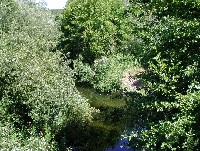 Click on image to enlarge (266K).
Click on image to enlarge (266K).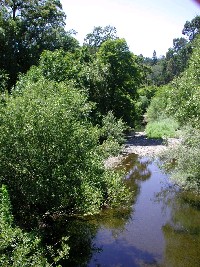 Click on image to enlarge (203K).
Click on image to enlarge (203K).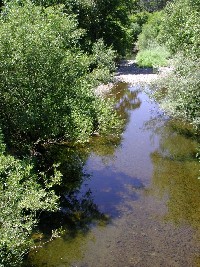 Click on image to enlarge (208K).
Click on image to enlarge (208K).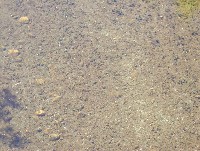 Click on image to enlarge (161K).
Click on image to enlarge (161K).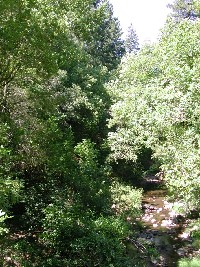 Click on image to enlarge (237K).
Click on image to enlarge (237K).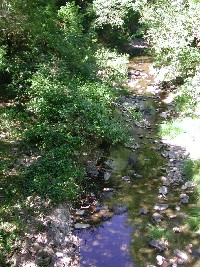 Click on image to enlarge (212K).
Click on image to enlarge (212K).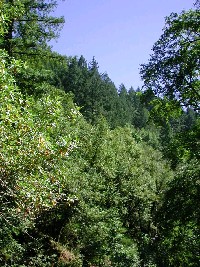 Click on image to enlarge (227K).
Click on image to enlarge (227K).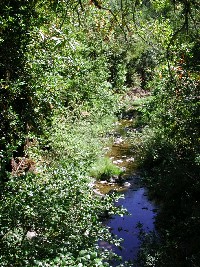 Click on image to enlarge (263K).
Click on image to enlarge (263K).
To learn more about this topic click Info Links
To view additional information (data source, aquisition date etc.) about this page, click Metadata
| www.krisweb.com |
